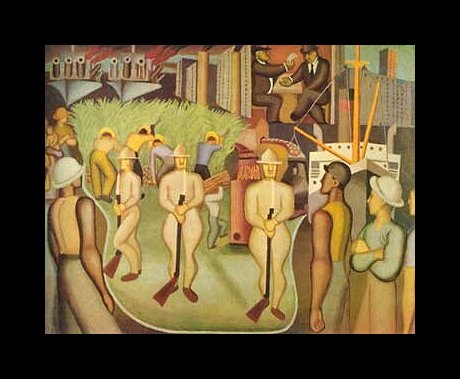Marcelo Pogolotti (1902-1988)
We Perform Marcelo Pogolotti art authentication. Marcelo Pogolotti appraisal. Marcelo Pogolotti certificates of authenticity (COA). Marcelo Pogolotti analysis, research, scientific tests, full art authentications. We will help you sell your Marcelo Pogolotti or we will sell it for you.
Marcelo Pogolotti was born and died in Havana. His family was well-off, and during his childhood, he received much of his schooling abroad in Italy. In 1919, he began to study engineering and philosophy in the US. However, he dropped these studies and enrolled in The Arts Students League in New York City in 1923. The following year, he left for a tour of Europe and visited Paris, Madrid and Rotterdam.
These studies abroad were what helped to for Pogolotti’s style. In Paris, he found Surrealism, and among the Italians he picked up futuristic painting. This is the style that he became known for, and was eventually named one of the leaders in abstract art in Cuba. Perhaps it is his training in engineering that makes him so fond of painting industrial scenes, but this becomes his trademark. His work was very socially driven, and although many have claimed that his art was propaganda, he was merely being a voice for the Cuban “peasantry.” He often depicted the pain and suffering of the working man in Cuba, and was an artistic voice against their exploitation.
One of his best known works, “Paisaje Cubano” (1933) is a perfect example of his Futurismo styling paired
with a social message.

One can very clearly see the surrealist themes and futuristic, technological and rounded styling that Pogolotti became known for. His paintings would often depict soldiers, people solemnly marching in line, factories billowing with smoke and other industrial images. Workers revolting and the military as a prison
are also symbolic themes represented in his work.
Pogolotti would travel and exhibit around the world, and after one travel abroad late in his career, he came home to discover his eyesight was failing. This put a serious halt on his career as an artist. His loss of sight made it nearly impossible for him to paint with the enthusiasm and drama that he once did, and he eventually became blind. Like many other painters who lose their sight, he took to sculpture for a while, and was also a literature and art critic. Pogolotti’s sculpture pieces and early landscape work during his years in training could definitely be floating around somewhere.
Today, Pogolotti’s work is housed all over Cuba and across the world. His art represented the changing of times during the Revolution in Cuba, and was a voice seldom allowed to be heard in art expression. He will always be known as a forerunner in abstract art and one of the few futuristic/surrealist Cuban painters of his time.
Reviews
1,217 global ratings
5 Star
4 Star
3 Star
2 Star
1 Star
Your evaluation is very important to us. Thank you.
